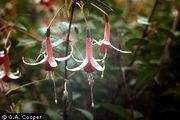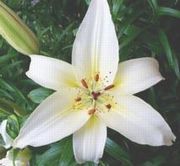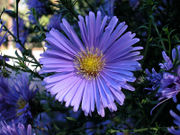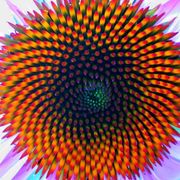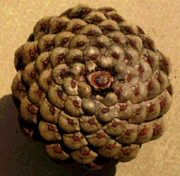Fibonacci Numbers Found in Petals on Flowers[6]
Many plants, especially flowers, have numbers of petals that are consistent with Fibonacci numbers. There are very few examples of species of flowers that have several petals that is not a Fibonacci number.
The fuchsia above is an example of one of the few plants that is not consistent Fibonacci numbers.
The lily above appears to have six petals, but it is actually three petals and three sepals.
Some species even use some of the higher Fibonacci numbers. The michaelmas daisy has 55 petals.
Fibonacci Spirals in Nature[7]
Fibonacci Spirals form very often in nature, especially in plants with seed heads. The reason lies in the way the seeds are packed into the seed head. Fibonacci spirals allow for optimization in the way the seeds are packed. The seeds will always be uniformly packed so there is even spacing, no matter how large the actual seed head is.
The seed head of the Coneflower exhibits a pattern that can be classified as a Fibonacci Spiral.
The number of spirals observed at various locations will be a Fibonacci number. For example, there are 55 spirals going right at the very edge of the seed head.
Pinecones also exhibit Fibonacci Spirals. The spirals start from the seed head and grow as they get further towards the edges.

